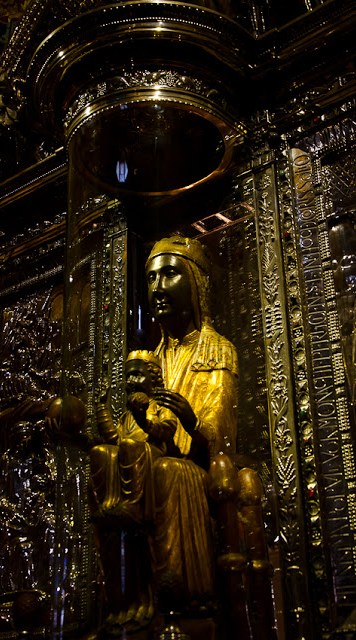Wild asparagus is strongly associated with spring and as an Italian I am continuing with my appreciation and fascination of wild asparagus and seasonal produce.
I bought these wild asparagus in Varese, close to Milan and once again they are totally different in appearance, taste and texture. These are from the woods, i.e. “bosco”. Their stems are slightly furry and they do not taste as bitter as the other two varieties I ate in Sicily or the wild asparagus I ate in Tunis.
In this region of Italy butter features strongly in cooking so I sautéed them in butter and added salt and pepper and a little lemon juice. We ate them as a contorno (side dish).
I sautéed the second bunch in butter and oil and then added eggs, some grated Parmigiano, salt and pepper and made a frittatatina (small frittata) – this is a very common way to eat wild asparagus in Italy; in Sicily it is one of the favoured foods on Easter Monday (called La Pasquetta).
FRITTATINA DI ASPARAGI ( Small Frittata….substitute with thin variety of asparagus)
Wash the asparagus well, break off any hard ends and break the asparagus into smaller pieces.
Sauté the asparagus in some extra virgin olive oil, add a little salt and pepper. ( Most Italians pre-soften them by boiling them first).
Mix 6 eggs that have been beaten with a fork, add a little salt and about 1 tablespoon of grated cheese.Pour the egg mixture on top of the asparagus, cook the frittata on one side, slide the frittata onto a plate, flip the uncooked side on to the pan and cook.
After Italy I went to Spain (Madrid, Toledo and Barcelona). I saw wild asparagus plants growing Toledo and in the Gaudi Gardens In Barcelona (including wild fennel and even bushes of thyme in Montserrat). I did not see them on menus or for sale in the markets in Spain but I suspect that the wild asparagus season is well and truly over – Spain was much warmer than Italy.
The quality of the vegetables in the markets in Spain is very good, but I was surprised not to see anything out of the ordinary. There were artichokes and broad beans (both in season) but nowhere near the range of salad or cooking greens I saw in Italy.
What I appreciated in Spain and especially in Barcelona were the artichokes. They are almost totally stripped of all their leaves, sliced very thinly, dipped in a little flour and deep fried.
Like the Italians, the Spaniards also eat them as a frittatina ( Spanish tortilla). The cleaned artichokes are sliced thinly and cooked in the same way as the wild asparagus.
MA2SBAE8REVW






Hi- I know this is a late response to your post, but I just found it and had to comment, though perhaps you know already. The “asparagi di bosco” are in fact the growing tips of wild or domestic hops plants, and not at all an actual asparagus. Delicious nonetheless I gre up in the Friuli region and in Verona as well, where I first tasted these. Now, living in the United States, I always have hops vines growing so I can harvest these delicious “asparagus” throughout the growing season.
Yes Ivy, Thank you.
Ove Fosså wrote this as part of a discussion with other members of the Oxford Symposium May 2013
Wild asparagus can be wild species of Asparagus, or the young shoots of a number of other plants eaten like asparagus. I can’t say for sure, but my guesses on the plants in the blog pages posted by Marisa Raniolo Wilkins above are: The asparagi di bosco look like hop shoots (Humulus lupulus). The first 3 pictures on the second page are most likely spiny asparagus (Asparagus aphyllus) and the next photo shows a species of butcher’s broom (Ruscus sp.), also eaten like asparagus.